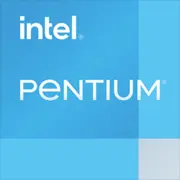Intel Pentium G3250

Intel Pentium G3250 nel 2025: classico budget o reliquia obsoleta?
Analisi completa del processore per utenti economici
Caratteristiche principali: cosa c'è dentro?
Il processore Intel Pentium G3250, lanciato nel 2014, è ancora presente in assemblaggi economici. La sua architettura Haswell (4ª generazione di Intel Core) è realizzata con un processo tecnologico a 22 nm, che era una soluzione innovativa per il suo tempo. Tuttavia, nel 2025, questo appare arcaico rispetto ai chip AMD e Intel a 7 nm.
Core e thread: 2 core, 2 thread. Questa è la configurazione minima anche per compiti di base. Cache L3 — 3 MB, che è la metà rispetto ai Pentium Gold moderni. Grafica integrata — Intel HD (GT1) per la 4ª generazione: supporta il 4K tramite DisplayPort, ma è poco adatta per i giochi.
Prestazioni:
- Geekbench 6: 573 (Single-Core), 975 (Multi-Core).
A titolo di confronto: Pentium Gold G7400 (2023) ottiene circa ~1500/2800. Tuttavia, per lavorare con documenti o guardare YouTube va più che bene.
Caratteristiche chiave:
- Moltiplicatore sbloccato (ma solo nel G3258, non nel G3250).
- Basso consumo energetico (TDP 53 W).
- Supporto per le istruzioni SSE4.2, AVX2.
Schede madri compatibili: cosa scegliere nel 2025?
Socket: LGA 1150 — formato obsoleto. Non vengono più prodotte nuove schede, ma nel mercato si possono ancora trovare modelli nuovi:
- ASRock H81M-HDS ($70-90).
- Gigabyte GA-B85M-D3H ($80-110).
Chipset:
- H81/B85 — di base, senza overclocking.
- H97/Z97 — supporto RAID, più porte SATA 6Gb/s.
Caratteristiche da considerare:
- Cerca schede con HDMI/DVI per connettere monitor moderni.
- Controlla la presenza di USB 3.0 (rilevante per SSD esterni).
- Evita schede con condensatori gonfi — un difetto comune nei modelli più vecchi.
Memoria: DDR3 contro standard moderni
Il Pentium G3250 funziona solo con DDR3-1333/1600. Non supporta DDR4/DDR5.
Raccomandazioni:
- Utilizza la modalità dual channel (2x4 GB o 2x8 GB) per aumentare la larghezza di banda.
- Capacità massima — 32 GB, ma per un PC da ufficio 8 GB sono più che sufficienti.
- Prezzi: nuovi moduli DDR3-1600 da 8 GB — $25-30 (ad esempio, Kingston HyperX Fury).
Limitazioni:
- Nessun supporto per profili XMP — non potrai ottenere frequenze di memoria superiori a 1600 MHz.
Alimentatore: quanti watt servono?
Con un TDP di 53 W, il processore è estremamente poco esigente in termini di alimentazione.
Raccomandazioni:
- Per un sistema senza scheda video dedicata: 300-400 W (ad esempio, be quiet! System Power 9 400W, $45).
- Con GPU come NVIDIA GT 1030: 450-500 W (Corsair CX450, $55).
Importante:
- Non risparmiare sull'alimentatore! Modelli economici (come Apevia) possono "rovinare" i componenti.
Pro e contro: a chi conviene?
Pro:
- Prezzo: nuovo processore — $50-60 (se lo trovi), usato — $15-20.
- Efficienza energetica: adatto per HTPC compatti.
- Facile installazione: il cooler stock funziona bene senza pasta termica.
Contro:
- Scarso supporto multi-thread: 2 thread sono pochi anche per un browser con 10 tab aperte.
- Nessun supporto PCIe 4.0, USB 3.1, NVMe (solo tramite adattatori).
- Grafica obsoleta: CS:GO al minimo — 30-40 FPS.
Scenari d'uso: dove è ancora rilevante il G3250?
1. PC da ufficio: Word, Excel, Zoom — il processore regge, ma può rallentare con più applicazioni aperte contemporaneamente.
2. Media center: Streaming video 1080p/4K (con decodifica hardware) tramite Kodi o Plex.
3. Server: NAS basato su OpenMediaVault — basso consumo energetico e potenza sufficiente per un file storage.
4. Progetti educativi: PC per studenti — avvio di Scratch, software didattici.
Esempio reale: Assemblaggio per i genitori — G3250 + 8 GB DDR3 + SSD 240 GB. Risultato: avvio rapido di Windows 11 (bypassando il TPM), visione di YouTube senza lag.
Confronto con i concorrenti: chi è migliore?
1. AMD Athlon 3000G (2023):
- 2 core/4 thread, GPU Vega 3.
- Geekbench 6: ~650/1350.
- Prezzo: $60 (nuovo).
Conclusione: Migliore nel multi-threading, ma più costoso.
2. Intel Celeron G5920 (2020):
- 2 core/2 thread, UHD 610.
- Geekbench 6: ~600/1100.
- Prezzo: $45 (nuovo).
Conclusione: Alternativa, ma senza vantaggi.
Consigli per l’assemblaggio: come non sbagliare
1. SSD obbligatorio: Kingston A400 240 GB ($25) eliminerà i “lag” dell'HDD.
2. RAM ottimale: 8 GB DDR3-1600 (2x4 GB).
3. Raffreddamento: Il cooler stock è sufficiente, ma per silenziosità prendi un Deepcool GAMMAXX 200T ($18).
4. Case: Mini-ITX (Fractal Design Node 304) per un media center.
Errori da evitare:
- Acquisto di una scheda madre costosa — non spendere di più per Z97.
- Installazione di una scheda video potente (ad esempio, RTX 3050) — il processore diventerà un “coll bottleneck”.
Conclusione finale: a chi è adatto il Pentium G3250?
Questo processore è una scelta per chi:
- Compone un PC economico per compiti di base (fino a $200 per il sistema).
- Ha bisogno di una soluzione energeticamente efficiente per lavoro 24/7 (ad esempio, un server domestico).
- Cerca un aggiornamento per un vecchio computer con LGA 1150.
Perché non conviene acquistarlo:
- Se intendi lavorare con Photoshop, montare video o giocare nel 2025 — è una spesa inutile.
Alternativa per il 2025:
- Con $100-120 puoi acquistare un Intel Core i5-6500 usato + scheda madre — sarà un notevole aumento di prestazioni.
Conclusione: Il Pentium G3250 nel 2025 è un prodotto di nicchia. Vive grazie al suo basso prezzo e alla semplicità, ma il suo tempo si sta avvicinando alla fine. Sceglilo solo se il budget è molto limitato e le esigenze minime.
Di base
Specifiche della CPU
Specifiche della memoria
Specifiche della GPU
Varie
Classifiche
Rispetto ad altre CPU
Condividi sui social media
Oppure linkaci
<a href="https://cputronic.com/it/cpu/intel-pentium-g3250" target="_blank">Intel Pentium G3250</a>